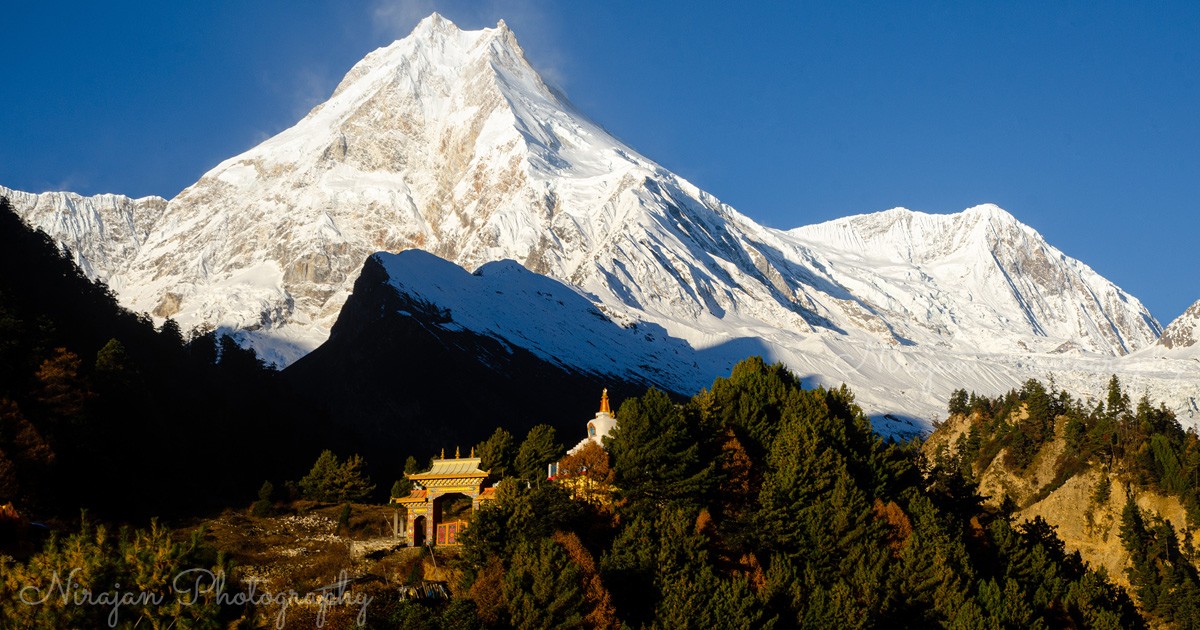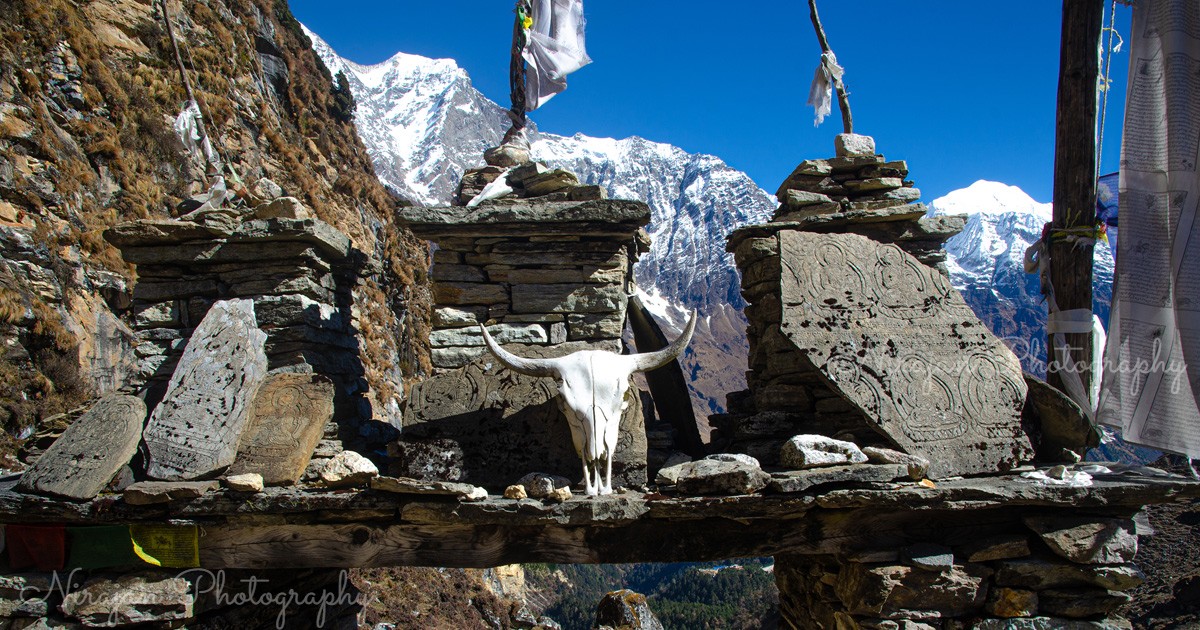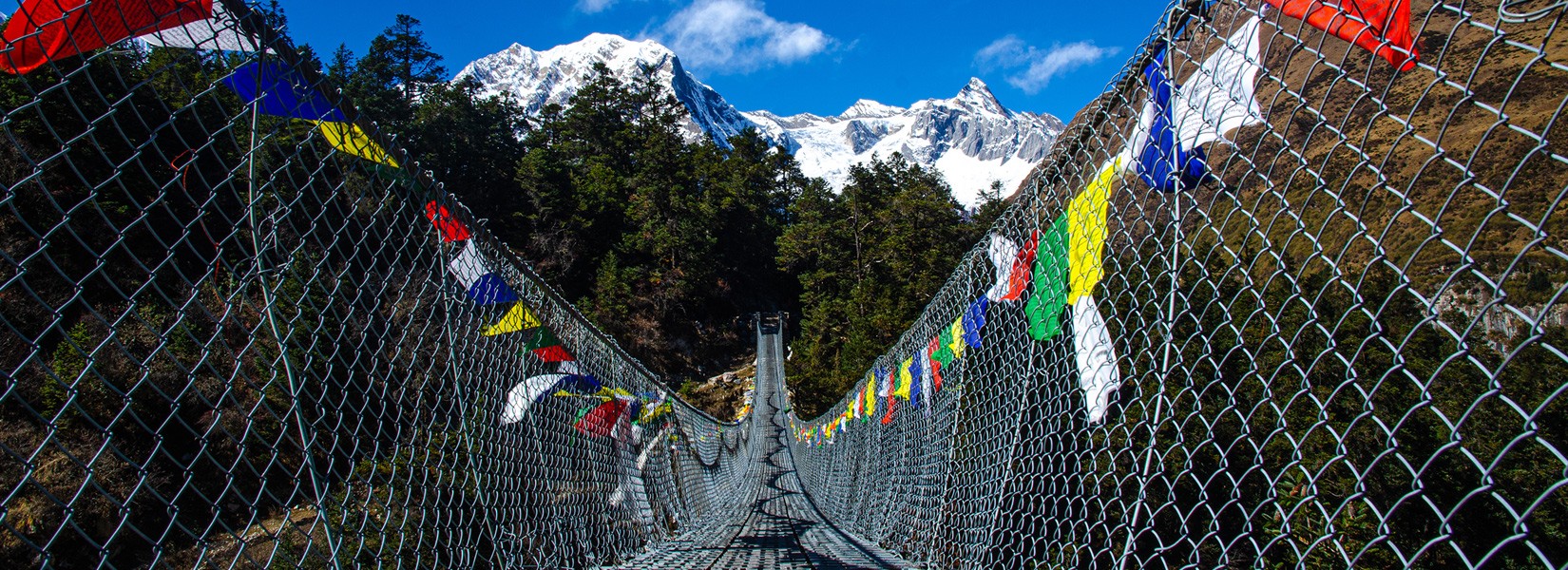This Manaslu Circuit Trek Guide, centered on the epic crossing of Larke Pass, is also my personal return to a mountain that called me back after many years. After a lifetime of office routine and city life, a profound longing for the mountains pulled me back to Manaslu. Finalizing work and coordinating with our trekking group, I felt the familiar thrill of anticipation. We were setting off not just on a trek, but on a journey back in time for me, a chance to see how the years had changed this legendary circuit.
Manaslu Circuit Trek Guide Larke Pass
Table of Contents
🗺️ Manaslu Trek: A Personal Return to the Raw Himalaya
After years of office routine and city life, a profound longing for the mountains pulled me back. This time, the call was for Manaslu. Finalizing work and coordinating with our trekking group, I felt the familiar thrill of anticipation. We were setting off not just on a trek, but on a journey back in time for me, a chance to see how the years had changed this legendary circuit.
🕰️ Then and Now: From Camping to Tea Houses
My last visit to Manaslu was 8 to 10 years ago, an era of fully camping treks. We carried everything with us—tents, food, and supplies. The landscape has since been reshaped by a different force: accessibility. Today, the Manaslu Circuit is a tea house trek. The convenience of dedicated lodges for food and accommodation (often with attached bathrooms!) means trekkers can walk with lighter packs, their needs met in warm dining halls each evening. This shift is the most significant change I witnessed.
📄 Navigating the Rules: Permits and Practicalities
The Manaslu Circuit lies within a restricted area, a status that preserves its fragile ecosystem and unique culture. This means foreign tourists must obtain a special permit from immigration (costing USD 100 for one week in the autumn season) and must be accompanied by a guide. Additionally, you need permits for both the Manaslu Conservation Area Project (MCAP) and the Annapurna Conservation Area Project (ACAP). While Nepalis can trek without a guide, it's compulsory for foreigners. This trek was only opened to the world in 1991, and its restricted status is a key part of its identity.
🚶♀️ Our Mission: Retracing the Old Route
As the leader of a trekking agency, this wasn't just a personal trip. Our group of 13—comprising 6 foreigners, guides, and porters—deliberately chose to follow the original main trek route. Our goal was twofold: to observe the changes since my earlier treks and to use this firsthand experience to refine our future trip packages.
The journey began with a drive from Kathmandu to Sotikhola. Ongoing highway construction caused minor delays, but our jumbo van got us there comfortably. Sotikhola itself has transformed into a bustling marketplace. To optimize our time, we decided to take a jeep from Sotikhola to Machha Khola.
The two-hour jeep ride was an adventure in itself—a rough, dusty, and unpaved track navigating potholes, fording streams, and passing under waterfalls. We reached Machha Khola late in the evening.
🌙 Evening in Machha Khola: First Glimpses of Change
Arriving after dark, the twinkling lights of the guesthouses and shops created the illusion of a vibrant little town. The contrast to the quiet spot I remembered was stark. Our late arrival meant a slight delay for dinner, but the food, when it came, was delicious and welcome. As we rested our tired bodies, I noted that finding comfortable food and accommodation is no longer the great difficulty it once was.
🏞️ The Raw Beauty Unfolds: River Gorges and Snowy Peaks
Rather than a day-by-day diary (which our friend Sandy will cover in the next blog), I want to share the overall essence of the trek. The Manaslu Circuit is a raw, untouched world compared to the more trodden paths of Everest or Annapurna. The core challenge is the approximately 177 km route that culminates at the formidable Larke Pass, a breathtaking 5,106 meters above sea level.
The initial stretch from Machhakhola to Philim mostly follows a roadside, which I found less thrilling. However, the grandeur of the Machhakhola River gorge, flanked by towering peaks like Lapchung (5880m), Chhachung (5996m), and Chmar (7100m), is undeniable. The constant roar of water and sight of cascading waterfalls is exhilarating.
Trekking in November, the riverside sections were deceptively hot. We wore windproof jackets, and as evening fell, the chilly air sweeping off the river was a sharp reminder of the altitude. I strongly recommend being prepared for these rapid temperature swings.
A note on weather: heavy rain in late October had draped the usually dark, dry hills in a blanket of snow, temporarily closing Larke Pass. This event seemed to bring the winter cold forward, a reminder of the mountains' unpredictable nature.

📍 Checkpoints and Choices: Jagat and Beyond
Jagat is the official entry checkpost, where your special permit, MCAP, and local village permits are meticulously checked. Even without sweeping Himalayan views immediately, the journey is captivating, defined by powerful waterfalls.
A key realization for me: it's now better to take a vehicle up to Siding Jagat or even Philim. A road for a hydropower project has made the initial walking trail less scenic, as you're sharing the path with jeeps. In autumn and spring, a jeep can get you to Philim on an unpaved track.
The true magic of the old trail began for me after crossing the bridge from Philim. Here, we left the road behind and walked the original path through local settlements. The clear weather showcased villagers busy with their lives—drying crops, grazing cattle, and basking in the sun. It was a heartwarming flashback.
It's strange to see the same environment changed by evolving lifestyles. Yet, it's clear that tourism is bringing positive development to these remote corners of Nepal. Sustainable tourism remains the best path forward. The MCAP and local councils deserve credit for well-managed trails and checkpoints, bringing organization to the wilderness. Many who "visit Gorkha" only see the palace; they are unaware of the remote, underdeveloped beauty of the Manaslu region, which is now gradually transforming.
❤️ The Heart of the Trek: Lho and Samagaon
Our itinerary was built around acclimatization for Larke Pass, but we remained flexible. The initial 15-17 km days prompted a change, leading us to stay in Lho. This was a serendipitous decision. For me, Lho was the most beautiful photo and sunrise viewpoint of the entire journey. If you do this trek, you must stay a night in Lho and wake up early for the morning view of Manaslu. It's simply unforgettable.
This brings me to the mountain itself. Mountaineers have rightly nicknamed Mt. Manaslu the "Killer Mountain," a testament to the extreme difficulty of its summit.

🚶 Culture, Challenges, and Highlights of the Upper Valley
This is not a solo trek. Permits require a minimum of two people, processed by trekking agencies through an online portal. The journey can be emotional; seeing small children on the trail asking for chocolate tugs at the heartstrings. This isn't just about poverty, but also remoteness—a life beyond the immediate reach of the state that can feel like another century. For those of us who grew up in similar environments, it's a poignant echo of the past.
The region is predominantly Gurung and Lama (Tibetan Buddhist), a cultural gem you must experience in Nepal. As you ascend, the landscapes become more distinct, revealing beautiful Himalayan valleys.
From Shyla village onwards, the Himalayan vistas are astounding. Below that, the trail is a dance across rivers, waterfalls, and countless suspension bridges. Some spots feel genuinely magical, pulled from a fairy tale, making you want to stay forever. The variation is incredible: settlements, rivers, forests, and finally, the high valley of the peaks.
While many plan to stay in Shyla, we chose Samagaon for two acclimatization nights. Shyla has new hotels and large gompas, but Samagaon felt more authentic. It's a large settlement with old houses, a traditional way of life, ancient water mills for grinding flour, and herds of cows and yaks (chauri). It is a living museum.
From here, Birendra Tal is unmissable. Manaslu Base Camp is an 8-hour round trip, but we opted for Pungyen Gompa. My assistant Santa and I made the rugged, uphill climb. The effort was rewarded with a breathtaking 360-degree view from the top—a place so serene I'm dreaming of setting up a two-day yoga camp there. The idea isn't to just label it a "yoga trek," but to create a profound, authentic experience.
📸 A Photographer's Paradise and a Beginner's Caution
As a photography enthusiast, I was in heaven. The raw landscape and poignant portraits are a dream. Bring a zoom lens to capture candid shots respectfully. Manaslu and Ganesh Himal are fickle models, changing their appearance from dawn to dusk.
📅 Seasonal Snapshots: For photographers, the clear skies of autumn provide stunning, crisp mountain portraits. In spring, the trails are lined with blooming rhododendrons, adding a splash of vibrant color to your landscape shots.
The cold is no joke. We recorded -17°C at night, and it was still -7°C until 8 AM. Do not skimp on warm gear. Your boots must protect your ankles on the extremely rugged path. Given the constant ascents and descents, I would hesitate to recommend this trek for beginners. And if you're afraid of suspension bridges, be warned—this trek has them in abundance!

❄️ The Rhythms of Nature and Mountain Life
This trek felt like a perfect blend of nature's rhythm, form, and dream-like quality. The unexpected snow had adorned the peaks, giving them a true, majestic Himalayan appearance.
The rhythm of the trail is often set by long lines of mules and donkeys (khachhad), the lifeline for goods transport. You may wait 15-20 minutes for them to cross a bridge. Remember: always stand on the wall side, not the cliff edge, when letting them pass.
The local ecosystem is fascinating. Lizards feed on grains in the mule droppings, while yak and cow dung are meticulously collected for fuel. In Samagaon, we saw dung plastered on walls to dry—a vital resource for the harsh winter. However, we also observed the negative impact of tourism: deforestation. Conservation rules exist, but the demand for warmth in dining halls is high, and dung alone isn't always enough.
We spotted langur monkeys, goats, and deer. We searched for the elusive snow leopard, but night fell before we had any luck.
🍖 Sustenance, Challenges, and the Traveler's Choice
For meat lovers, this trek can be disappointing. We ate mostly vegetarian, with eggs being a reliable staple. Local tea shops offer yak jerky, but fresh meat is rare. Menus now commonly feature Pizza, Pasta, Dal Bhat, and Momo.
At high altitude, it's crucial to eat protein-rich food and drink plenty of water. The thin air can quickly lead to feeling cold and to Acute Mountain Sickness (AMS).
✋ A Non-Negotiable Must: Travel Insurance
I must emphasize a point I forgot to mention earlier: comprehensive travel insurance is non-negotiable for a trek of this nature. This is not a gentle walk in the park. We have seen many people rescued from the Himalayas due to AMS, injuries, or other emergencies. Your insurance must cover high-altitude trekking up to 6,000 meters, emergency helicopter evacuation, and medical expenses. Do not embark on this journey without it.
My philosophy? Trekking is not a marathon. What's the point of rushing if you don't absorb the beauty into your heart and mind? Speaking of marathons, the Manaslu Trail Race was on during our trek, causing overbooking in many guesthouses.
On connectivity: NTC (Nepal Telecom) provides surprisingly good 4G internet up to Samdo and for about 3 km before Dharmasala. NCELL is unreliable. In Dharmasala, only sporadic network exists, and the internet fails.
❄️ The Crucible: Dharmasala and Larke Pass
The night at Dharmasala before the pass is tough. With limited rooms and intense cold, foreigners often share spaces, and staff may sleep in tents. Headaches and sleeplessness are common at this altitude.
The Larke Pass crossing starts in utter darkness, around 3 or 4 AM. A headlamp is mandatory. Due to snow, we used spikes—a crucial item. Don't forget gloves and warm hats. Electricity for charging is unavailable in Dharmasala, so a power bank is essential.
In my experience, Larke Pass is slightly easier than the Thorong La Pass (Annapurna Circuit) in terms of distance and elevation. However, this is not a beginner's trek. The long distances, significant altitude gain, and the particularly difficult descent from the pass to Bhimthang make it a serious challenge.

🎯 Final Reflections: A Message for Travelers, Not Tourists
After this journey, I believe we should close bookings during the monsoon. The trail, pleasant in photos, is terrifying in the rains, with landslides and washed-out paths. We had to navigate falling stones carefully. Mid-winter is equally tough due to the extreme cold.
As NIMS Purja says, "Nothing is impossible," but you must not attempt this without proper precautions, experienced guides, and the right gear. My company's motto prioritizes the safety of clients and staff alike.
This Manaslu trek is not for tourists; it is for travelers. Tourists look for comfort, but travelers seek to experience everything, both the beautiful and the challenging. Now ask yourself: Are you a Tourist or a Traveler?
🏔️ Choosing Your Season:
For Culture & Clarity (Best): Autumn (Sept-Nov) is my top recommendation. The skies are crystal clear, and you are immersed in the local way of life during the harvest. Witnessing villagers threshing barley in golden fields is a cultural highlight.
For Flowers & Snow (Second Best): Spring (March-May) is equally attractive. The trails are painted with blooming rhododendrons, and the mountains are generally well-covered in snow.
For the Hardened Adventurer: I strongly advise against the monsoon (June-Aug) due to landslides and dangerous trail conditions, and mid-winter (Dec-Feb) due to the extreme cold and difficulty of crossing the pass.
A final, heartfelt message, especially for my fellow Nepalis: please do not disregard weather forecasts, gear, or altitude. A trek that was easy last year may not be this year. Your body changes. Taking time to acclimatize might add two days, but it ensures a joyful and safe return. Many accidents stem from insufficient preparation.
Some agencies offer short, acclimatization-less treks. Remember, a trek involves porters and guides whose lives are equally valuable. If you have the time and want a journey that is not just about the name of a mountain or the distance walked—a journey whose memory will remain vivid long after the mountain's height is forgotten—then we invite you to join our team. We strive to make every step unique and memorable.



